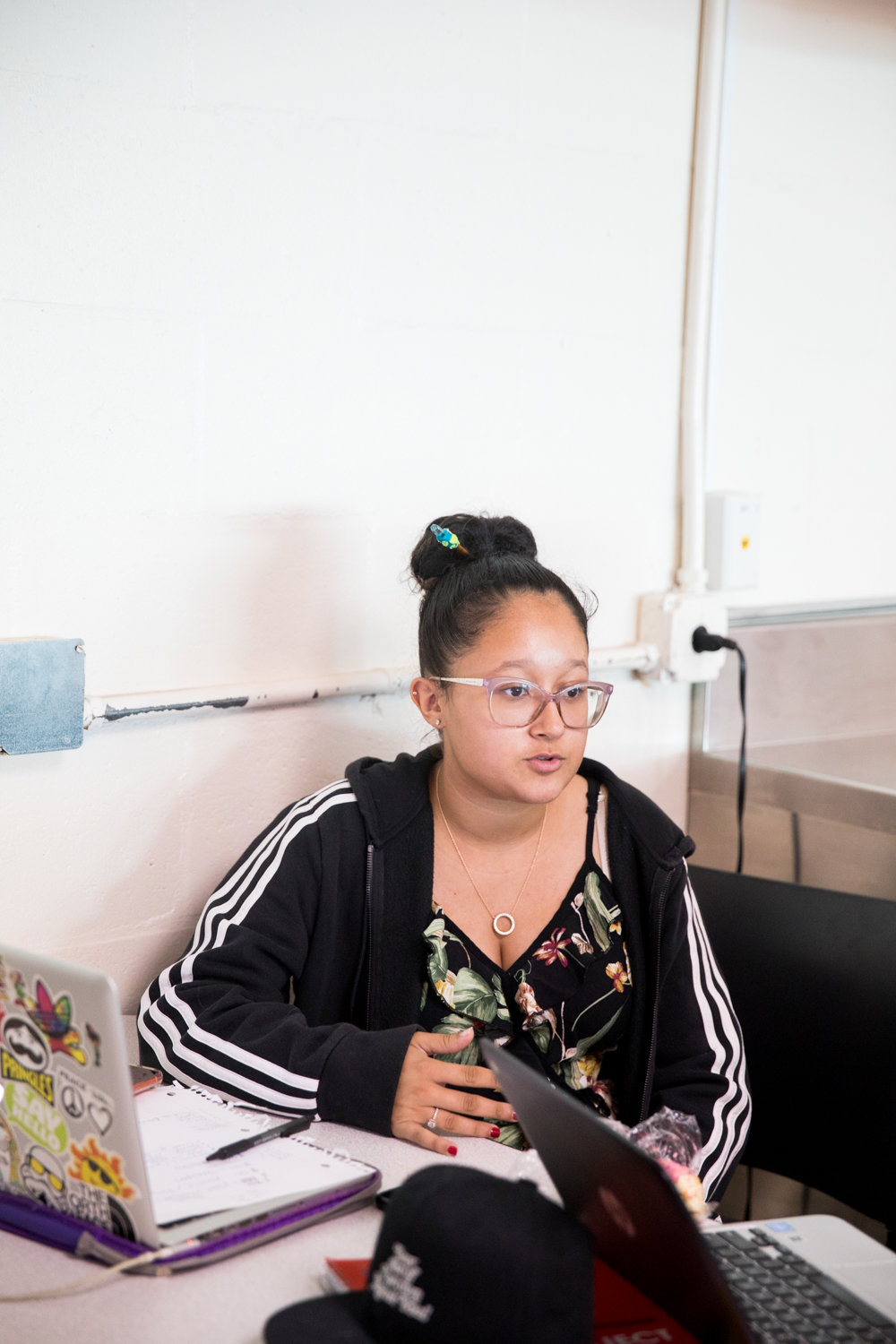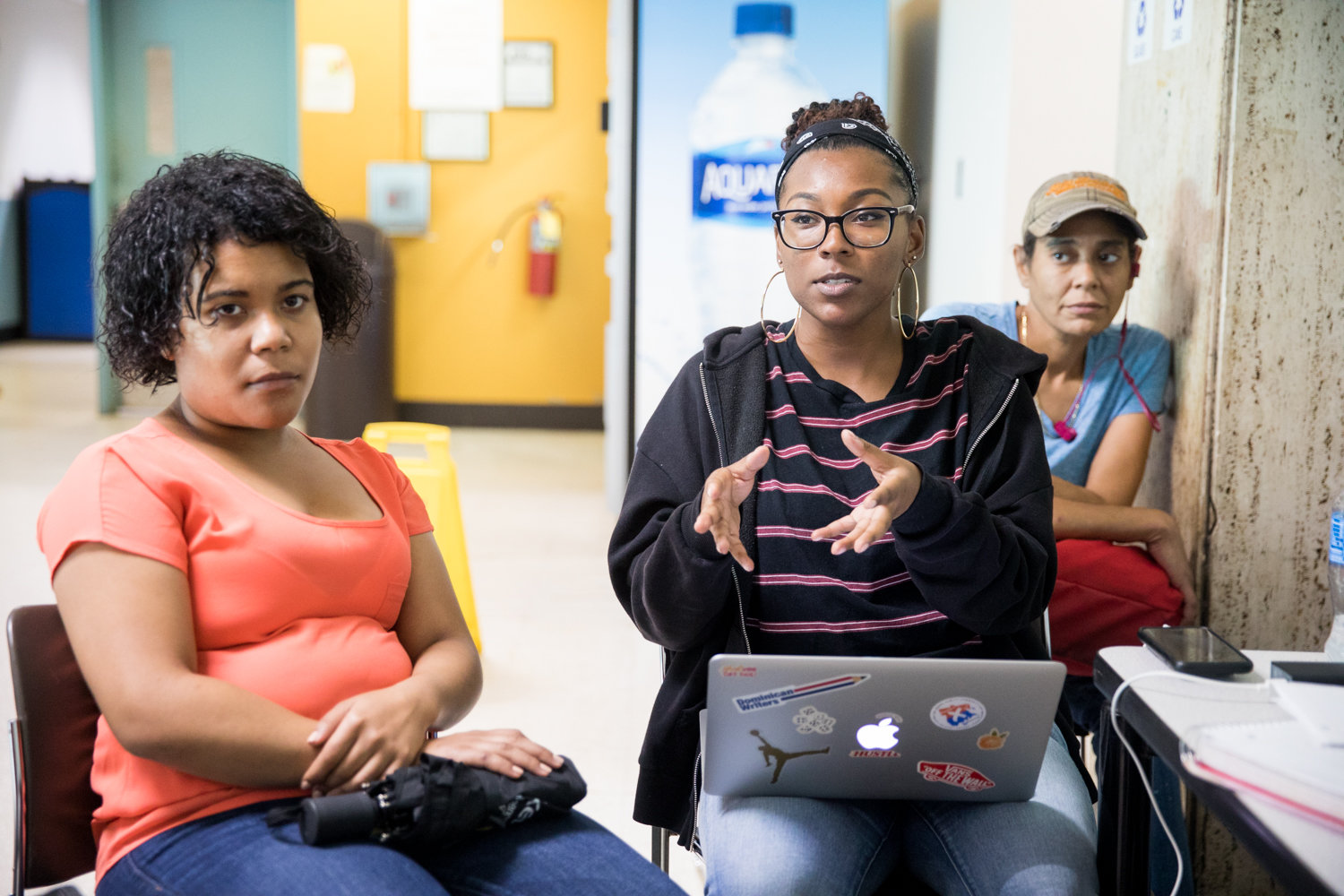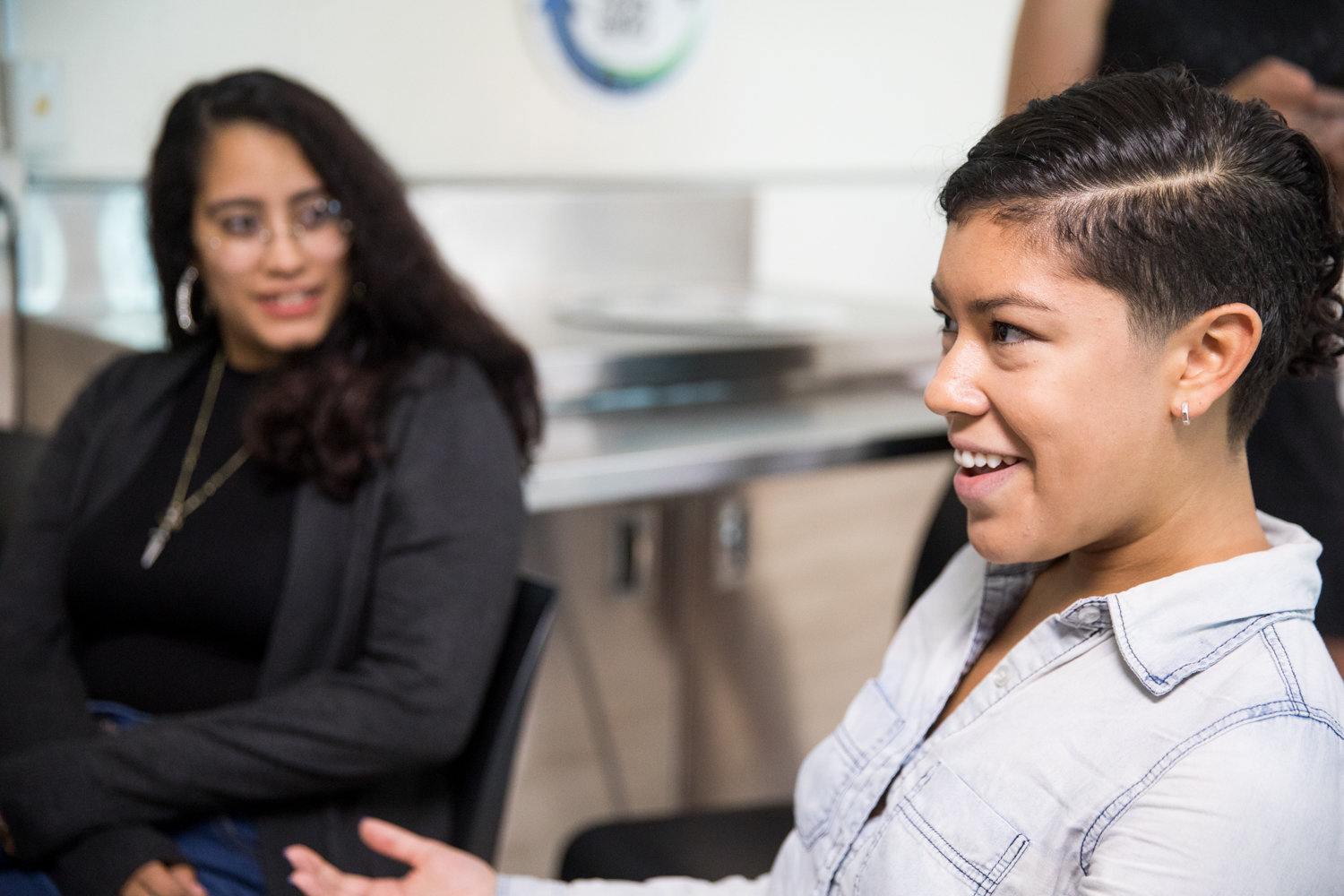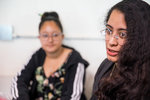Latin students find themselves at Lehman
Hispanic Heritage Month is drawing to a close, and a small group of students have joined each other at a table inside Lehman College talking about some of the events their group, Latinx Alliance, have put together so far.
In fact, it’s more than many of them realized — a poetry reading, screenings of the documentaries “Knock Down the House” and “Underwater Dreams,” a panel recounting the Hispanic history of Lehman.
The club works to form a community at a school classified as a “Hispanic-serving institution,” requiring at least a quarter of its student population to be Hispanic or Latino. Lehman is well beyond those minimums, as more than half trace heritage back to Hispanic and Latino countries. Through Latinx Alliance — using the gender-neutral term for those of Latin descent — these students have found ways to support and celebrate their heritage while exploring themselves. At the same time, they teach those outside the community about Hispanic culture.
“It’s so comfortable here, and a lot of us are Latino on campus,” said Rebecca Perez the club’s co-president. “But we also don’t feel like we see that on campus. It’s seen in the student body, but not so much on campus, or in the curriculum.”
That’s why they’re focused on events — push events like Hispanic Heritage Month to the forefront — to start that discussion and bring students in.
It’s “just a safe space for everyone to celebrate their cultures appropriately, and in a way that they feel they are part of the campus,” Ariel Vargas said.
“This isn’t just the Lehman campus statistic, 53 percent, but you’re seeing it on campus. You’re seeing your people out and celebrating.”
Behind the scenes, Latinx Alliance members are thinking beyond the heritage month (which ends Oct. 15), focusing on diversifying classes and curriculum.
One example comes with Lehman’s literature program, according to club treasurer Lily Hooks. Students are required to take three literature classes, but all three are of British works.
“We only have one Latino literature course, and it’s not required,” Hooks said. “It’s between Latino lit, African-American lit, and Asian lit. You have to pick which one. So most kids, if you’re black, you might choose the African American over the Latino lit. So you don’t actually learn about other cultures. You just stick with what you’re comfortable with.”
Beyond that, some of those classes are taught by white professors. It’s not that white professors can’t or shouldn’t teach those courses, Hooks said, but when she first walked into a Latino literature classroom, she assumed she’d find a professor who looked like her.
“They understand, but they don’t understand everything (the literature) is telling you about your own community,” Hooks said. “It’s like, I don’t know how I feel about this.”
The alliance’s faculty advisor, Melissa Castillo Planas, was instrumental in bringing the club together after it almost went dormant following graduation last year. Castillo Planas teaches Latino literature, pushing her students to attend events around campus, especially with the Latinx Alliance.
As an author herself, Castillo Planas knows the importance of being able to see yourself reflected in the art around you.
The professor experienced that for the first time in her own freshman year of college, when she was assigned to study the works of poet Gloria Anzaldúa. They both share a Mexican American background, and Anzaldúa chronicled her experiences growing up in the United States.
“She writes all about the experience of being Mexican American and being divided,” Castillo Planas said. “Like, I’m not like my cousins in Mexico, I’m not fully Mexican in that way. And also being American. I had never read anything that spoke to that experience.”
Castillo Planas teaches Anzaldúa’s work every year, no matter what class she’s teaching.
“I really want my students to see themselves in literature, to see themselves as potential writers, or authors, or teachers,” she said. “Or feel like literature is something that they can own, that can be theirs. It’s not something that’s borrowed from someone in England. It’s intimately tied to their own experience.”
Castillo Planas chose most of the heritage month events, mostly based on her own preferences, because she feels so strongly about the ties to literature in community building.
Mixing it up is important too.
“We want to make sure they have a space to celebrate their culture,” Vargas said. “That’s what we look for most in our events. We tailor them so everyone has a chance to experience their interests. We have poetry readings, we have a dance crew, we had film nights. Reach out to more students and get them involved, there is something on campus for everyone.”
The alliance members are working through seeing themselves in their community, and building a place where others can see themselves.
“I’m third generation,” Perez said. “I’m a really bad Latina in that I don’t speak Spanish at all.”
“But that doesn’t make you a bad Latina,” Vargas interjects.
“That was the thing, I hadn’t really come to terms with that until Professor CP came in, and until we started this club,” Perez said about Castillo Planas. “And we started realizing it’s always been about finding your culture.”
The club has certainly found a community in each other, Hooks said. Earlier that day, for example, alliance members were placing a tamales order for one of their upcoming events.
“I called this place in the Bronx, I’m talking to her, and I can tell she doesn’t understand me, and I’m like, ‘Oh, shoot. My Spanish is awful,’” Hooks said. “I’m Puerto Rican and Dominican and Cuban, but I don’t have any Spanish.”
She recruited the other girls, trying to figure out who had the best Spanish, and who could best place their precious tamale order.
“Aura was the only one,” Hooks said. “She has this beautiful Colombian accent, and she saved the day. And the tamales.”













